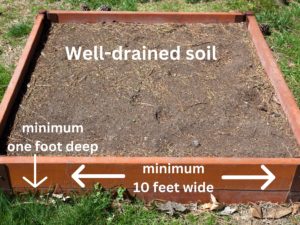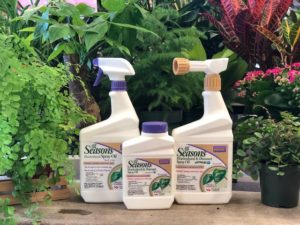Fruit Trees in Central Texas
It’s fruit tree planting time again. Such a rewarding experience! There is one caveat, however.
Fruit trees may be grown in Central Texas as long as their basic conditions are met.
Sun is required for fruit trees to grow and produce fruit. Be sure to locate your trees where they will receive at least 8 hours of direct sun each day.
Water is required for fruit trees to thrive and produce fruit. Once a tree is established, soaker hoses supply water to the tree roots without wetting the foliage, which helps prevent disease. Avoid overhead watering or overspray from lawn sprinklers. Be prepared to water all the way out to the drip-line of the tree, and extend the watering area annually, as the tree grows. Mulch will help conserve moisture and a 2”-3” layer of mulch under the canopy will keep weeds at bay as well. Do not allow the mulch to touch the trunk of the tree.


Pest and Disease Management should be an ongoing affair. Check the trees often and have problems diagnosed by a professional. Spray trees with All Seasons Horticultural Oil in February to prevent insects and disease. Click HERE for our blog on Oil Products.
Chilling Hours are the number of hours between 32° and 45°F that certain fruit trees require in order for their leaf and flower buds to emerge and grow in the spring. Try to choose trees that have a requirement of between 650-850 chilling hours for Central Texas. Trees with less chilling hours may bloom early and fruit may be lost to late freezes. These trees may produce fruit only 3 out of 7 years or so.
Pollinizers are required for many fruit trees to produce a decent crop of fruit. Some trees, such as peach trees, are “self-fruitful” and do not require a pollinizer. Pay attention to which varieties are recommended for cross-pollination. They should be planted within 50-100 feet of each other for bees to pollinate them.
Spacing is important, as good air circulation will cut down on disease and the trees will not be competing with each other. Most fruit trees will do well if they are spaced about 20 feet apart.
Weed Control is often overlooked at the tree’s expense. Weeds harbor insects and compete with the tree for water and nutrients. String trimmer damage to trunks is not reversible, so keep the grass from growing right up to the trunk. Mulch will keep weeds at bay, just don’t let it touch the trunk.
Fertilize after the leaves have emerged in the spring with MicroLife 6-2-4 organic fertilizer. Spread it evenly under the canopy.
Now that you area armed with this information, you can make your fruit tree selections wisely. See our Fruit Tree Variety List by clicking HERE.
